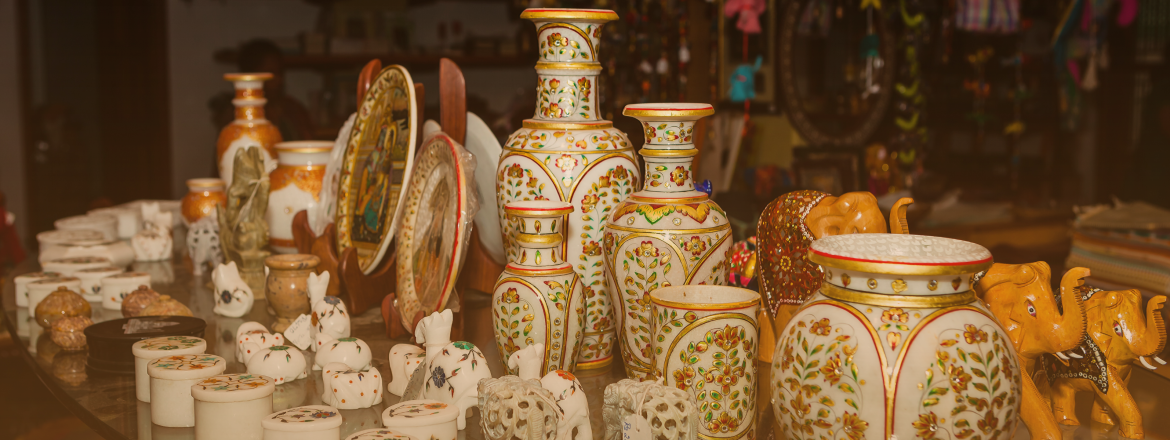The Most Profitable Handicrafts to Export from India
Handicrafts have a long heritage in India and have remained one of India’s superior cultural and economic intangible assets. With centuries of craftsmanship and regional artistry as well as sustainable practices, handicrafts signify not only heritage but also an opportunity for global trades of high value. Indeed, Indian handicrafts today occupy a very unique place in the international arena of export items that appeal to buyers who value authenticity, artistry, and cultural significance.
In this article, we explore which handicrafts are the most profitable to export from India, while examining opportunities for exports in wood, textiles, leather, and jewellery, and outlining market trends and business practices for exporters.
1. Overview of Indian Handicrafts in Global Trade
Handicrafts account for a large part of India’s small and medium enterprises, with millions of artisans working across states. The United States, the United Kingdom, the Middle East, and parts of Europe are still the main markets, while new East Asia markets are continuously increasing in prominence.
Due to their handmade quality, exotic cultural patterns, and lower average price than industrial substitutes, Indian handicrafts have a competitive advantage in global markets.
2. Why Indian Handicrafts Export Items Are Profitable
The profit potential of Indian handicrafts rests upon three primary positions:
- Diversity of product base – from utilitarian wood items to luxury silk and jewelry, along with many other goods.
- Global demand for sustainable and sustainably sourced goods – illustrated by the fact that much of the handmade craft work is done through sustainable processes.
- Scalability – as an artisan product, exporters can coordinate large actions through groups of skilled artisans.
These positions render handicrafts easily adaptable to both mass markets and luxury niches in international markets.

3. Wooden Handicrafts: Global Demand and Trends
Wooden handicrafts export from India is one of India’s most desirable exports. Wooden handicrafts from India have great international appeal, particularly in places like Saharanpur in Uttar Pradesh, where wooden carving is especially intricate and produces furniture, decor, and utility items that are predominantly exported.
The demand for wooden handicrafts from India is significantly driven by:
- A global inclination toward sustainable home decor.
- The longevity and durability of Indian teak, rosewood, and mango wood.
- Carved designs are unique because they are hand-made and differ from mass-produced items.
4. Textiles: The Strength of Craft and Tradition
Textiles and handicrafts export from India is still leading the field, with a variety of products including Banarasi silk, Pashmina shawls, handwoven cotton, block-printed fabrics of Rajasthan, etc. The textile segment remains highly lucrative, for:
- Ongoing demand in the fashion and home decor spaces.
- A unique capability to combine traditional designs with current aesthetics.
- High brand equity of Indian textiles within luxury global markets.
The increase in demand for slow fashion and sustainable clothing only adds momentum to Indian textile exports.
5. Leather Handicrafts: A Niche Yet Profitable Category
Compared to the wood and textiles market, the leather handicrafts export market in India is smaller, yet it commands a premium pricing that is higher than all others.
Exporters from Kolkata (West Bengal), Kanpur (Uttar Pradesh), and Tamil Nadu export leather accessories, such as bags, belts, wallets, and shoes.
Leather handicrafts have value because of the utility they provide, as well as being luxury items: The number of leather artisans in India who hand-tool, emboss, and use traditional decorative embellishments is very limited. Each product is unique for export markets.
6. Handmade Jewellery: A Rising Global Trend
Handcrafted jewelry is currently an emerging export growth area in India. From Jaipur’s diamond and embellished jewelry, tribal silver, and contemporary silver, Indian makers supply luxury and more affordable segments. Profitability drivers include:
- Increasing consumer demand for unique, crafted jewelry in Europe and the USA.
- Consumer preference for artisanal, ethically sourced products instead of fast fashion.
- Use of e-commerce channels enables small makers to connect with and sell to international buyers directly.
7. Regional Specialties in Indian Handicrafts Export Items
Different regions provide valuable products, like:
- Rajasthan – blue pottery, block-printed fabrics, meenakari jewellery.
- Kashmir – Pashmina shawls, papier mâché articles.
- Tamil Nadu – bronze figurines, leather handicrafts.
- West Bengal – jute products, Baluchari handlooms.
- Uttar Pradesh – wooden crafts and chikan embroidery.
This diversity ensures that exporters will be equipped to service the diverse requirements of the global market with specific products.
8. Role of Innovation and Modernization
While traditional at their core, handicraft exports benefit from modernization of packaging, branding, and marketing practices. Exporters find that they are commanding wider profit margins abroad when they implement modern design while keeping their traditional essence. Digital platforms create an even wider reach.
9. Challenges in the Export of Handicrafts
While the industry has some strength, it also has to overcome challenges such as:
- Quality checks are not being standardized.
- Dependence on fragmented artisan networks.
- Competition from machine-made copies.
- Increasing logistics costs.
It is vital to address these gaps through either federal initiatives or private enterprise for the sake of profitability.
10. Government Support for Export Growth
Programs like the Export Promotion Council for Handicrafts (EPCH), subsidies for participating in international trade fairs, and grants for digital marketing have helped artisans to penetrate global markets. Exporters who use these programs will often have an advantage over their competitors.
11. Future Outlook for Indian Handicraft Exports
The future for Indian handicraft export will be in innovating on tradition. The global consumers are shifting to value originality, sustainability, and connection to culture, meaning India should only be in the best position possible. Indian handmade export items will see significant growth in the premium lifestyle and luxury market.
Conclusion
Handicrafts are not products but stories of India’s heritage, skill, and innovation. Wooden handicrafts export India, textile handicrafts export India, leather handicrafts export India, and handmade jewellery export from India, all present profitable opportunities for exporters. With the right mixture of craftsmanship, modern business practices, and government support, India’s handicrafts will continue to find and establish an exclusive niche in global trade.
Frequently Asked Questions (FAQ)
Electronics, pharmaceuticals, renewable energy, and textiles will all be drivers.
India provides cost-effectiveness, skilled labor, and positive policy choices, making India a secure addition to global supply chains.
Textiles, pharmaceuticals, agro-processed products, and electronics.
Very competitive due to regulatory compliance, quality, and cost parity with similar products, and benefits from a tariff-free trade agreement.
Suppliers provide flexibility, scale, and reliability to global buyers and thus mitigate the supply chain disruption inherent in supply chain risks.
Great people, great policy, together with a variety of industry clusters.









